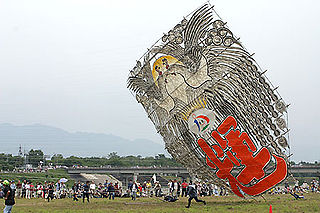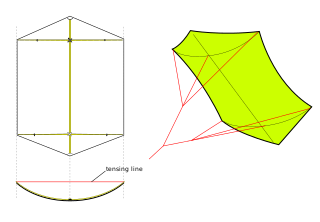
A fixed-wing aircraft is a flying machine, such as an airplane or aeroplane, which is capable of flight using wings that generate lift caused by the aircraft's forward airspeed and the shape of the wings. Fixed-wing aircraft are distinct from rotary-wing aircraft, and ornithopters. The wings of a fixed-wing aircraft are not necessarily rigid; kites, hang gliders, variable-sweep wing aircraft and aeroplanes that use wing morphing are all examples of fixed-wing aircraft.

String instruments, stringed instruments, or chordophones are musical instruments that produce sound from vibrating strings when the performer plays or sounds the strings in some manner.

A tailplane, also known as a horizontal stabiliser, is a small lifting surface located on the tail (empennage) behind the main lifting surfaces of a fixed-wing aircraft as well as other non-fixed-wing aircraft such as helicopters and gyroplanes. Not all fixed-wing aircraft have tailplanes. Canards, tailless and flying wing aircraft have no separate tailplane, while in V-tail aircraft the vertical stabilizer, rudder, and the tail-plane and elevator are combined to form two diagonal surfaces in a V layout.

Kite aerial photography (KAP) is a hobby and a type of photography. A camera is lifted using a kite and is triggered either remotely or automatically to take aerial photographs. The camera rigs can range from the extremely simple, consisting of a trigger mechanism with a disposable camera, to complex apparatus using radio control and digital cameras. On some occasions it can be a good alternative to other forms of aerial photography.

Kite is a common name for certain birds of prey in the family Accipitridae, particularly in subfamilies Milvinae, Elaninae, and Perninae.
In music, a bow is a tensioned stick with hair affixed to it that is moved across some part of a musical instrument to cause vibration, which the instrument emits as sound. The vast majority of bows are used with string instruments, such as the violin, although some bows are used with musical saws and other bowed idiophones.

Foil kites are soft kites based on the design of the parafoil. They consist of a number of cells running fore to aft, some or all of which are open at the front to allow air to inflate the kite so it takes on an aerofoil section. Due to the amount of power that these kites can generate, they can be used for a variety of different activities including kitesurfing, kite landboarding, snowkiting, kite buggying, kite-energy systems or airborne wind energy, and recreational kiting.
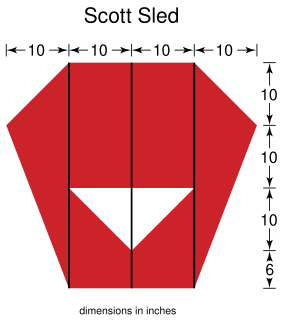
A Scott Sled is a type of kite developed in the early 1960s by Frank Scott of Ohio and based on the sled kite, an earlier design by William Allison, also based in Ohio. In 1964 it was featured in Kite Tales, the newsletter of the American Kitefliers Association; as a result it became much more widely known. A large number of derivative designs have appeared since then, the design described here is as it appeared in 1964.
Kemenche or kemençe is a name used for various types of stringed bowed musical instruments having their origin in the Eastern Mediterranean, particularly in Greece, Iran, Turkey, Armenia, and regions adjacent to the Black Sea. These instruments are folk instruments, generally having three strings and played held upright with their tail on the knee of the musician. The name Kemençe derives from the Persian Kamancheh, and means merely "small bow".
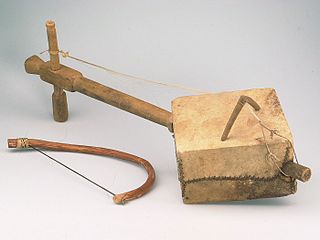
The mesenqo or chira-wata is a single-stringed bowed lute commonly found in the musical traditions of Ethiopia and Eritrea. As with the krar, this instrument is used by Ethiopian minstrels called azmaris . Although it functions in a purely accompaniment capacity in songs, the masenqo requires considerable virtuosity, as azmaris accompany themselves while singing.

Peter Trevor Powell was a kite maker who developed a steerable kite in 1972, using dual lines. Very early on, Powell's kites had spars made of ramin (Gonystylus) which were later replaced with aluminium tubing and, later still, by glass fibre spars. Originally they all came with black plastic sails, though later blue, red and yellow sails became available. The kites came with a long, hollow polyethylene tail that was inflated by the wind. The tail added stability as well as looking good when performing stunts.

The transom knot is a simple lashing knot used to secure two linear objects, such as spars, at right angles to each other.

Fighter kites are kites used for the sport of kite fighting. Traditionally most are small, unstable single-line flat kites where line tension alone is used for control, and an abrasive line is used to cut down the string/line of other kites.

Kites are tethered flying objects which fly by using aerodynamic lift, requiring wind for generation of airflow over the lifting surfaces.
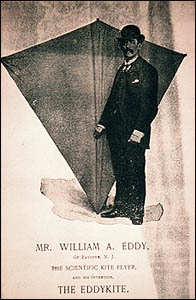
The Malay kite is a model of tailless kite. First introduced to the West in a New York City newspaper article from October 1894, the Malay kite was used for recreation for centuries before this in parts of the Far East. The article detailed how a university professor ("Clayton") had erected a series of kites and bound them all together to one kite. These kites had no tail, were bowed and diamond-shaped, and were referred to by the article writer as "Malay kites". However, the existence of a Malay-like design may have already been heard of in the United States sometime before the publishing of the article; in the last edition of the American Boy's Handy Book, another tailless kite is described. The description of this kite, which was to be included as a chapter in the book, was sent in to the author sometime around 1882, eleven years before the Malay kite was mentioned in the newspaper.
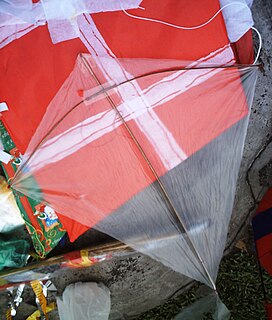
Chapi-chapi is a small two-stick kite that can be quickly constructed from cheap materials such as newspapers, broom sticks, or discarded plastic sheet. It is very popular in the Philippines. The name itself colloquially means, "assembled fast" or "quickly improvised". A strong, straight stick is used for the vertical frame. The horizontal stick is tensioned into a bow in order to provide greater support for the paper or plastic sheet. A very long bottom tail is almost always necessary, while the side tails or fins are optional.

William Abner Eddy was an American accountant and journalist famous for his photographic and meteorological experiments with kites. The scientific significance of Eddy's improvements to kite-flying was short-lived, due to the advent of Lawrence Hargrave's rectangular box kites. Nevertheless, in the year following Eddy's death, a train of ten Eddy kites reaching an altitude of 23,385 feet (7,128 m) set a height record for several years.

On a bowed string instrument a bow stroke is the movement of the bow back and forth perpendicularly across the string, from the frog to the tip and from the tip to the frog, producing sound.

